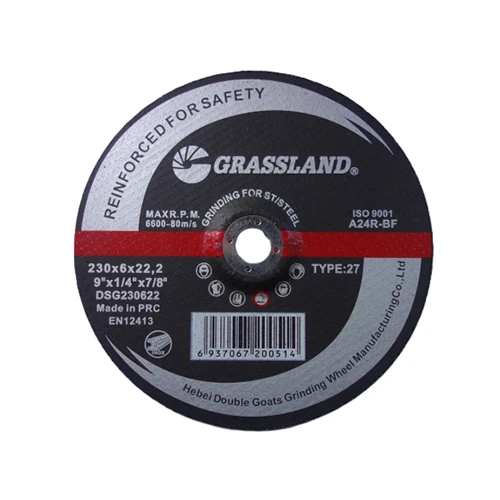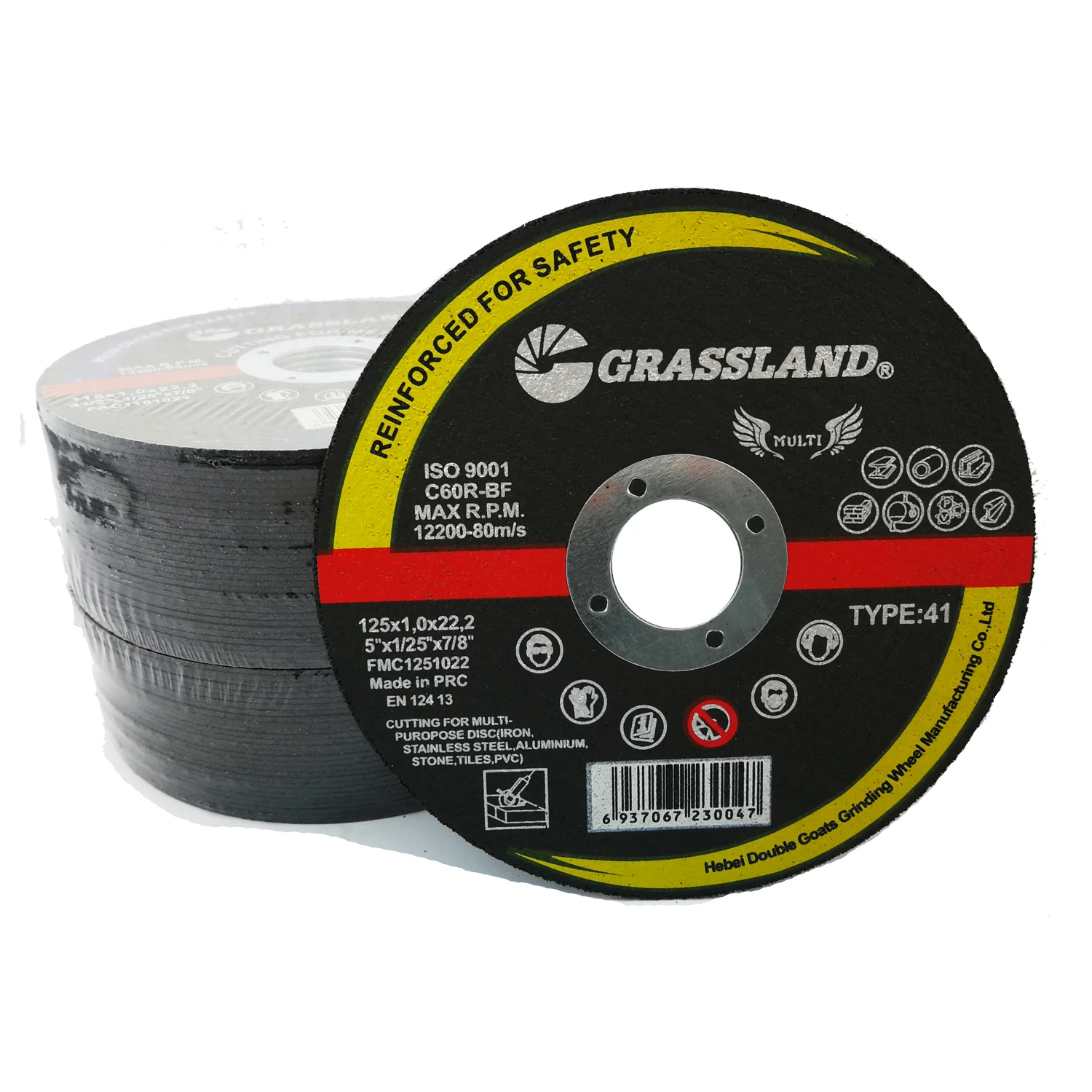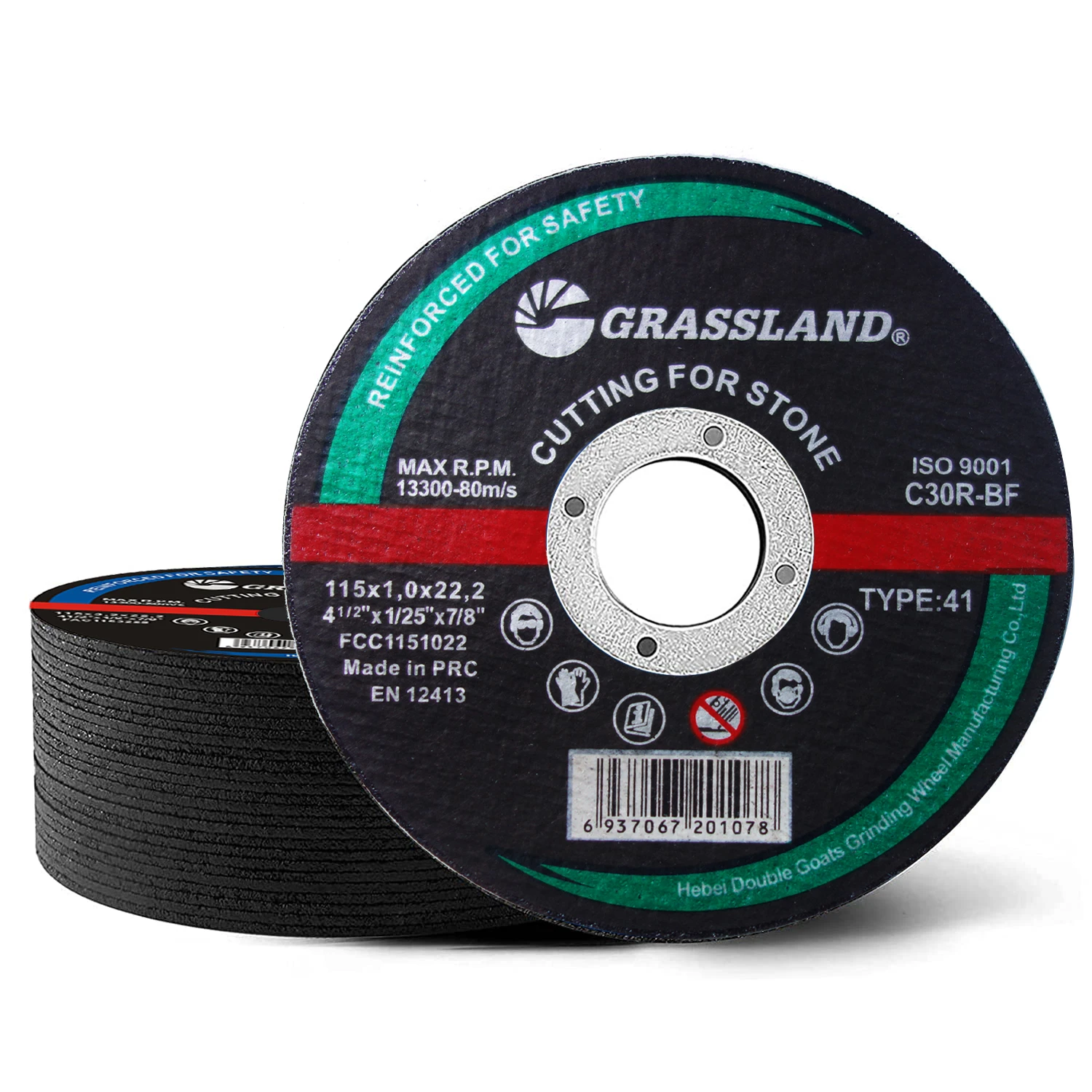What to Know Before You Buy a 9-Inch Sanding Disc for Angle Grinders
If you’re hunting for a 9 inch sanding disc that actually holds up on steel, stainless, or tough fabrication jobs, this is one of those products that looks deceptively simple but hides a lot of engineering. I’ve toured a few abrasive plants; the good discs aren’t just “sand glued to paper.” They’re resin-bond composites with glass-fiber reinforcement, tuned hardness, and tight process control. The Grassland 9 Inch 230mm x 3mm x 22.23mm Abrasive Disc from Hebei, China, is a case in point—priced sharply, yet certified and surprisingly consistent in real-world use.

At a Glance: Product Specs
| Model | 230 x 3.0 x 22.23 mm (≈ 9” x 1/8” x 7/8”) |
| Grain | Aluminum Oxide or Zirconia Alumina (custom) |
| Bond / Reinforcement | Phenolic resin, 2–3 fiberglass meshes |
| Max Speed | 80 m/s (≈ 6,600 RPM for 230 mm) per EN 12413 |
| Hardness Grade | Medium–Hard (shop feedback: “stays sharp without glazing”) |
| Certifications | MPA, ISO 9001; factory holds ISO 14001, OHSAS 18001 |
| MOQ / Price | 10,000 pcs; ≈ US$0.19–0.25 (real-world may vary) |
| Origin | No.88 Economic & Technological Development Zone, Shucheng, Hejian, Hebei, China |
Where a 9 inch sanding disc Actually Performs
- Weld preparation and beveling on structural steel
- Scaling and rust removal on shipyard plate
- Pipeline fit-up, saddle cuts, and clean-up passes
- Stainless handrail fab—edge blending without burning
- Construction site repairs where portability matters
Many customers say the 3.0 mm thickness hits a sweet spot: not flimsy, not a brick. It’s a “leave-it-on-the-grinder” disc for all-day tasks.
Process, Materials, and Testing (the unglamorous reasons it lasts)
Materials: closely graded A/O or zirconia, phenolic resin, glass fiber mesh. Methods: cold pressing, precision curing, post-cure balancing, and laser marking. Testing: burst speed per EN 12413, side-load, hardness, and dimensional runout. Grassland samples I saw reported burst > 90 m/s; lot Cpk on thickness hovered around 1.33—reassuring for consistency, to be honest.
Typical service life in fab shops: around 25–40 minutes of continuous grinding on mild steel, or ≈ 6–8 g/min removal rate on 8 mm plate—your mileage will vary with pressure, angle, and grinder power.

Vendor Snapshot: who’s a fit for what
| Vendor | Certs | MOQ | Price (≈) | Lead Time | Notes |
|---|---|---|---|---|---|
| Grassland (China) | MPA, ISO 9001 | 10k | $0.19–0.25 | 30–60 days | Strong value; private label friendly |
| Generic Import A | Factory ISO claimed | 5k | $0.16–0.20 | 45–70 days | Lower cost, variable consistency |
| Premium EU Brand | MPA, EN 12413 | 1k–5k | $0.60–1.20 | 14–30 days | Top performance, higher cost |
Customization options
- Grain type and blend (A/O vs Zirconia for pressure grinding)
- Hardness and bond for stainless vs carbon steel
- Labeling, barcodes, shrink-wrap → inner box → carton → pallet
- Private logo, color ring codes, bilingual safety labels (ANSI B7.1/EN)
Case notes from the field
A Texas fab shop switched to 9 inch sanding disc spec’d with zirconia; average operator reported 18% fewer disc changes per shift on A36. Meanwhile, a Pune pipeline contractor liked the cooler cut on SS pipe—slower glazing, fewer burns. Not scientific, sure, but consistent chatter from supervisors for three months.
Safety, standards, and compliance
Look for EN 12413 and MPA marks; match RPM to your grinder; guards on, flanges clean, and never side-load a disc not rated for it. For site docs, ANSI B7.1 and OSHA 1910 are your friends.
References:
- ISO 9001: Quality Management Systems – iso.org
- EN 12413: Safety requirements for bonded abrasive products – shop.bsigroup.com
- ANSI B7.1: Safety Requirements for the Use, Care and Protection of Abrasive Wheels – ansi.org
- OSHA 29 CFR 1910 Subpart O (Machinery and Machine Guarding) – osha.gov
- MPA Hannover guidelines for bonded abrasives – mpa-hannover.de
Post time:Oct - 11 - 2025

















